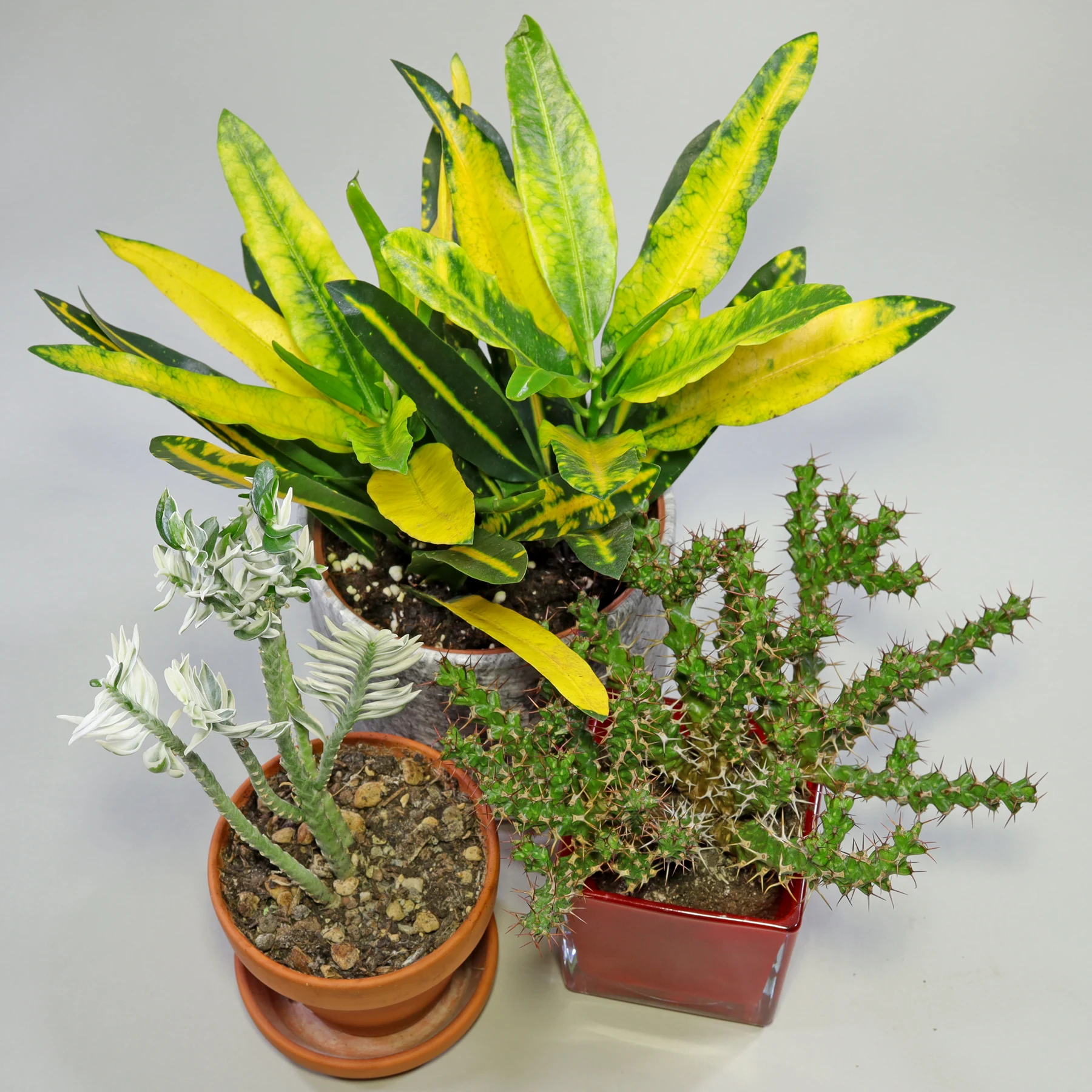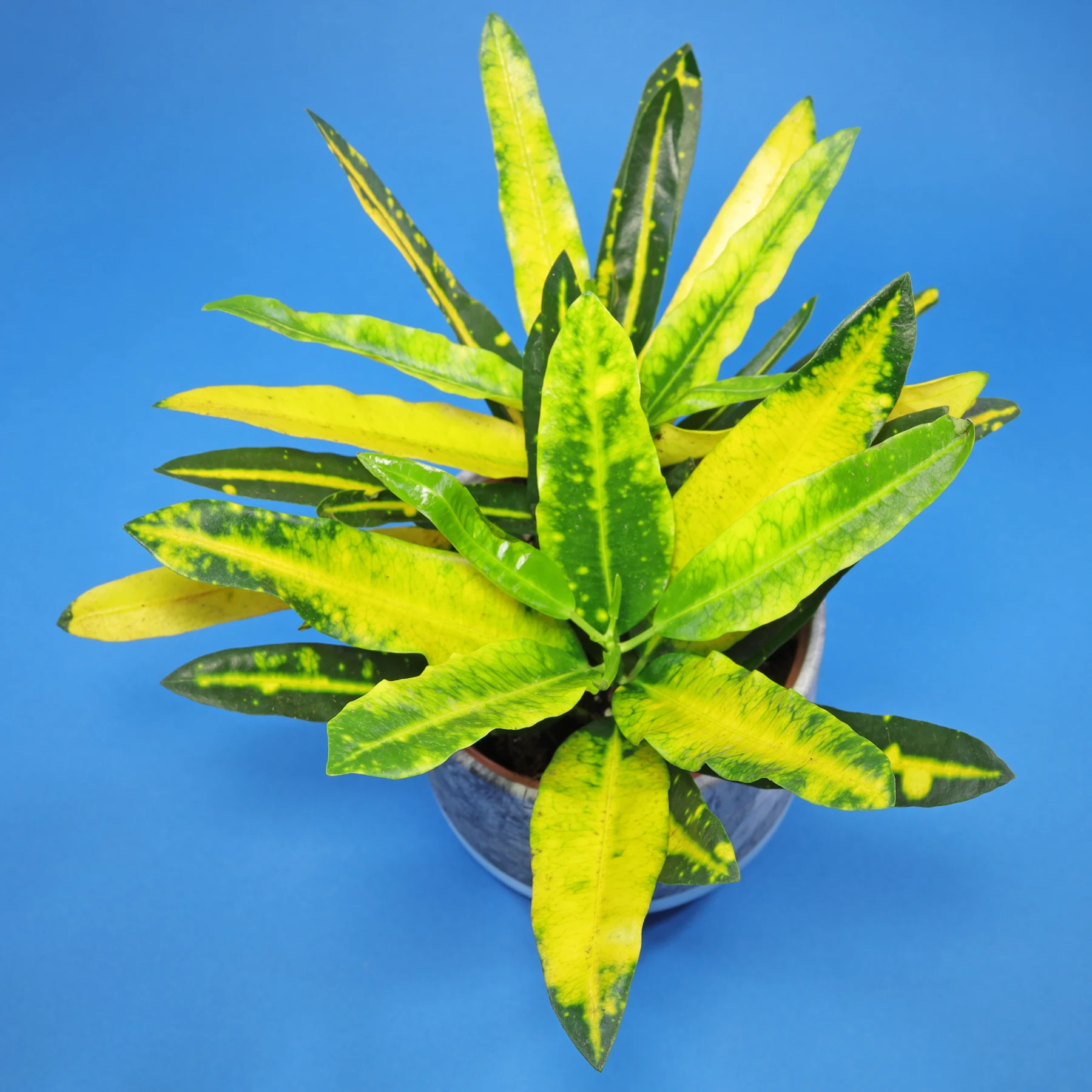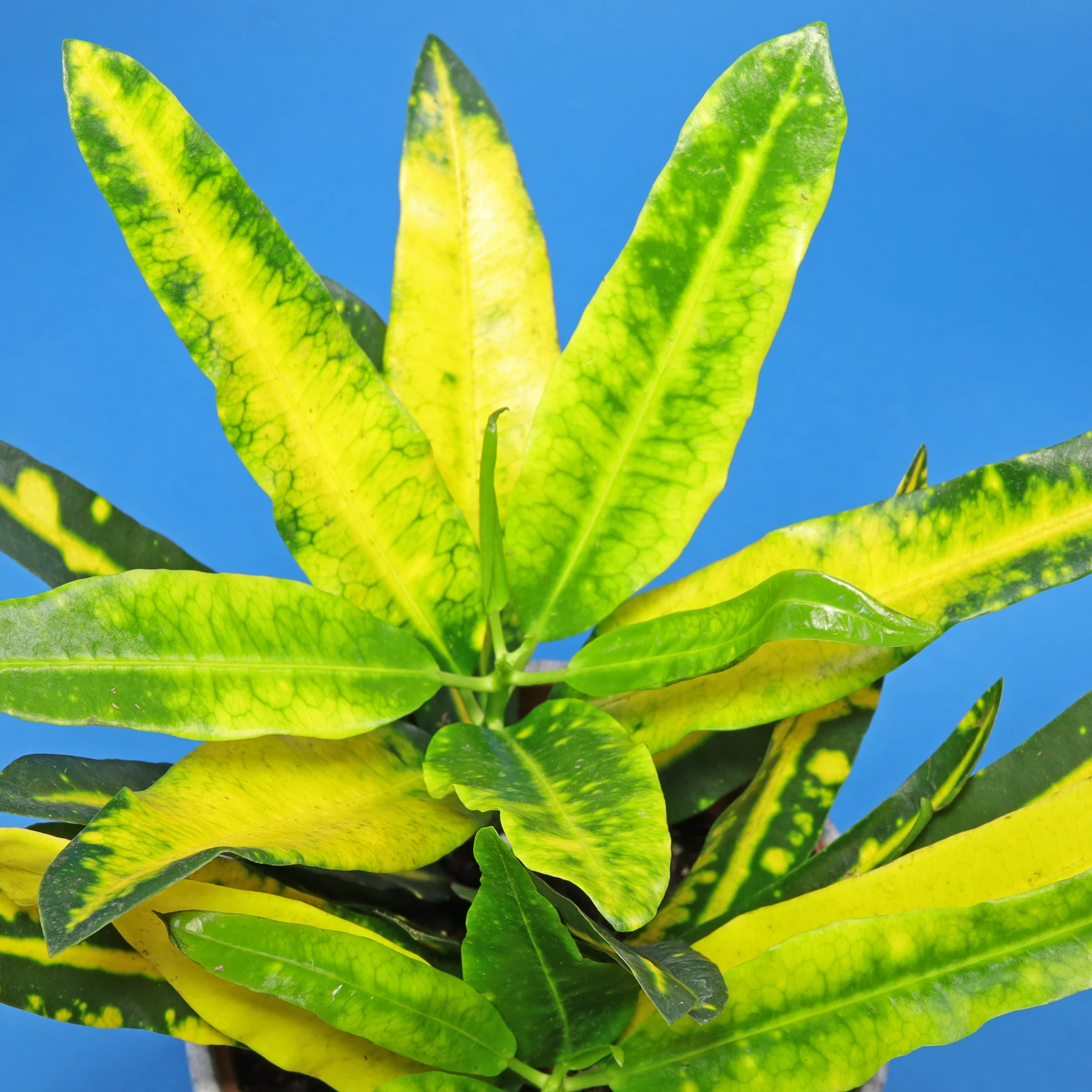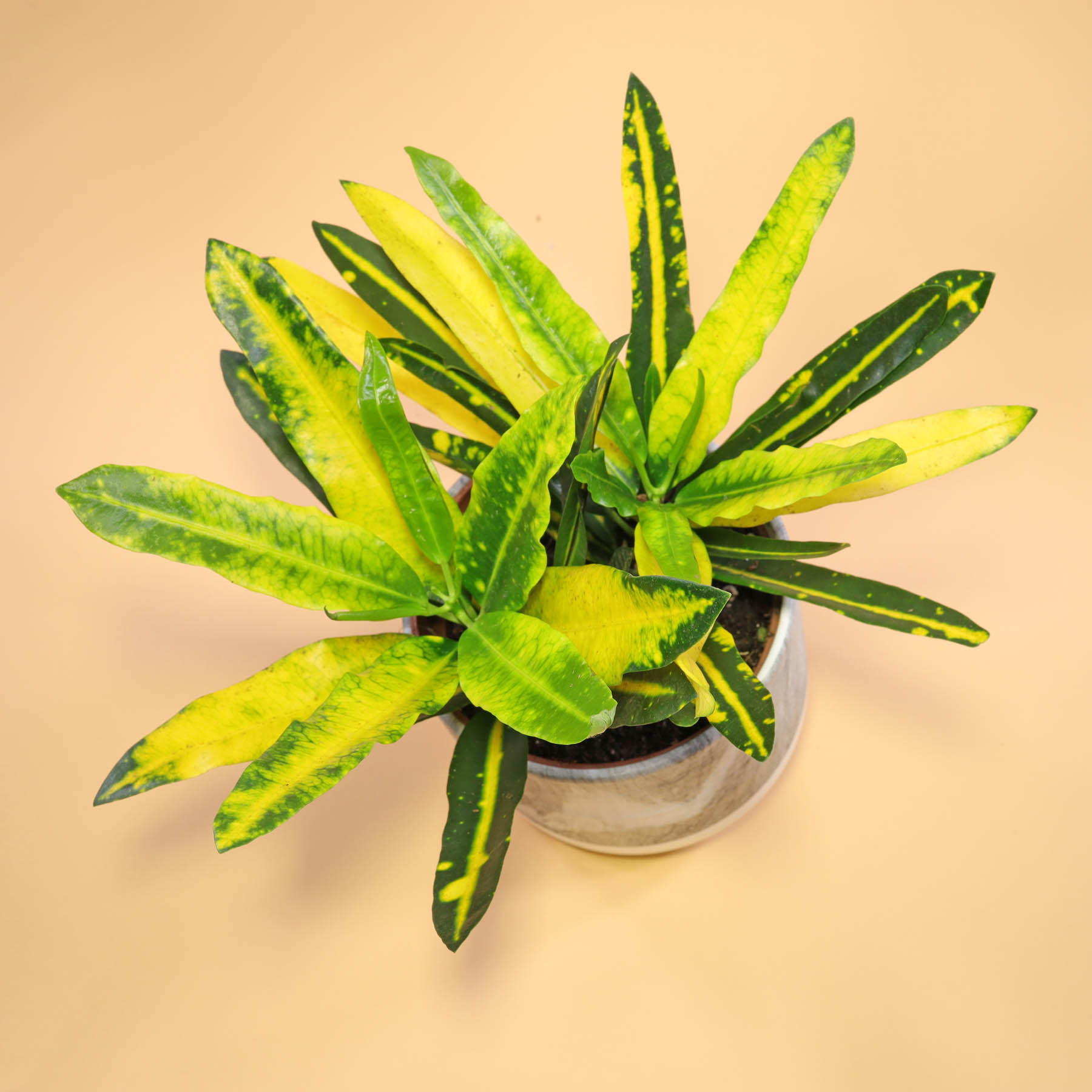It may not be obvious at first glance, but the croton is a member of the spurge family. It is typical of plants in this family that they are poisonous in all parts. This is also true of Codiaeum variegatum.

Codiaeum variegatum “Sunny Star” is a cultivar that differs from the wild type by having thin leaves that can be yellow striped, mottled, or almost entirely yellow.

Codiaeum variegatum “Sunny Star” plant care
Light & Temperature
Codiaeum variegatum “Sunny Star” should be placed in a bright to semi-sunny position for intensive leaf coloring. Sites with morning sun, late evening sun or winter sun are well suited.
Older specimens in a large pot or container that does not allow the root ball to dry out within a few hours will tolerate the hot summer sun once acclimated.
Croton’s natural range is the tropical Pacific region. As an indoor plant, it likes to be kept warm throughout the year and should not be exposed to temperatures below 59 °F (15 °C) for long periods of time.

Watering & Soil
The root ball should always be kept slightly moist, but not dripping wet. It may dry on the surface. Stagnant moisture and dryness are not tolerated.
Codiaeum variegatum “Sunny Star” does not require a specific soil. Standard mixes for houseplants, container plants, herbs or vegetables are suitable.
Fertilization
Sticks, granules or pellets can be added to the soil in spring and summer.
Liquid fertilizer can be applied monthly from spring to fall.
Since almost all substrates are pre-fertilized, it is sufficient to start fertilizing one year after purchase or repotting.


 Euphorbia canariensis
Euphorbia canariensis Euphorbia polyacantha
Euphorbia polyacantha Euphorbia rowlandii
Euphorbia rowlandii Euphorbia succulenta
Euphorbia succulenta Griffith’s spurge
Griffith’s spurge How to grow the Barbados-nut (Jatropha curcas) from seeds
How to grow the Barbados-nut (Jatropha curcas) from seeds Petty Spurge, Cancer Weed, Radium Weed
Petty Spurge, Cancer Weed, Radium Weed Prostrate spurge, prostrate sandmat
Prostrate spurge, prostrate sandmat Spurges (Euphorbiaceae)
Spurges (Euphorbiaceae) Sun Spurge, Madwoman’s Milk
Sun Spurge, Madwoman’s Milk